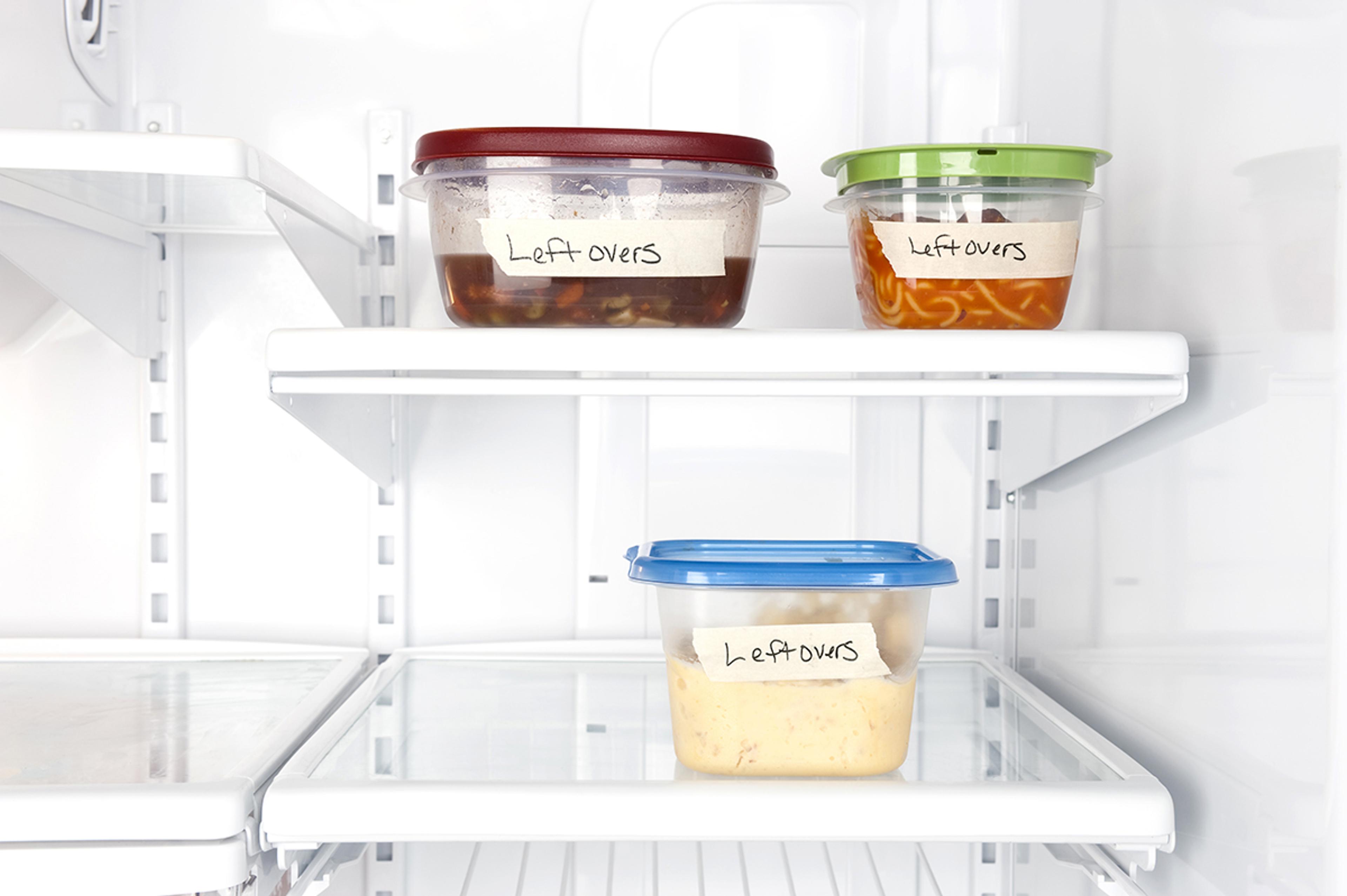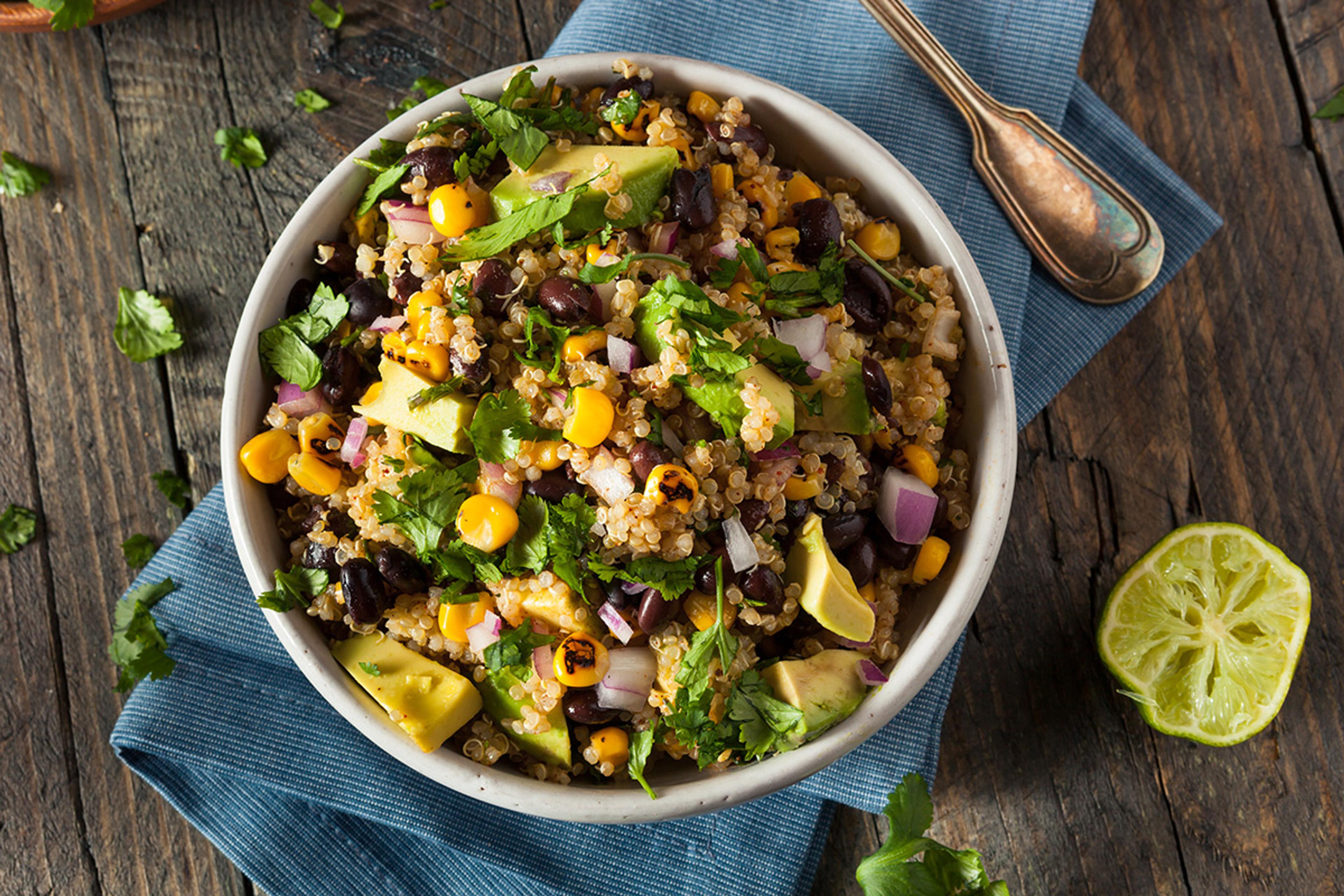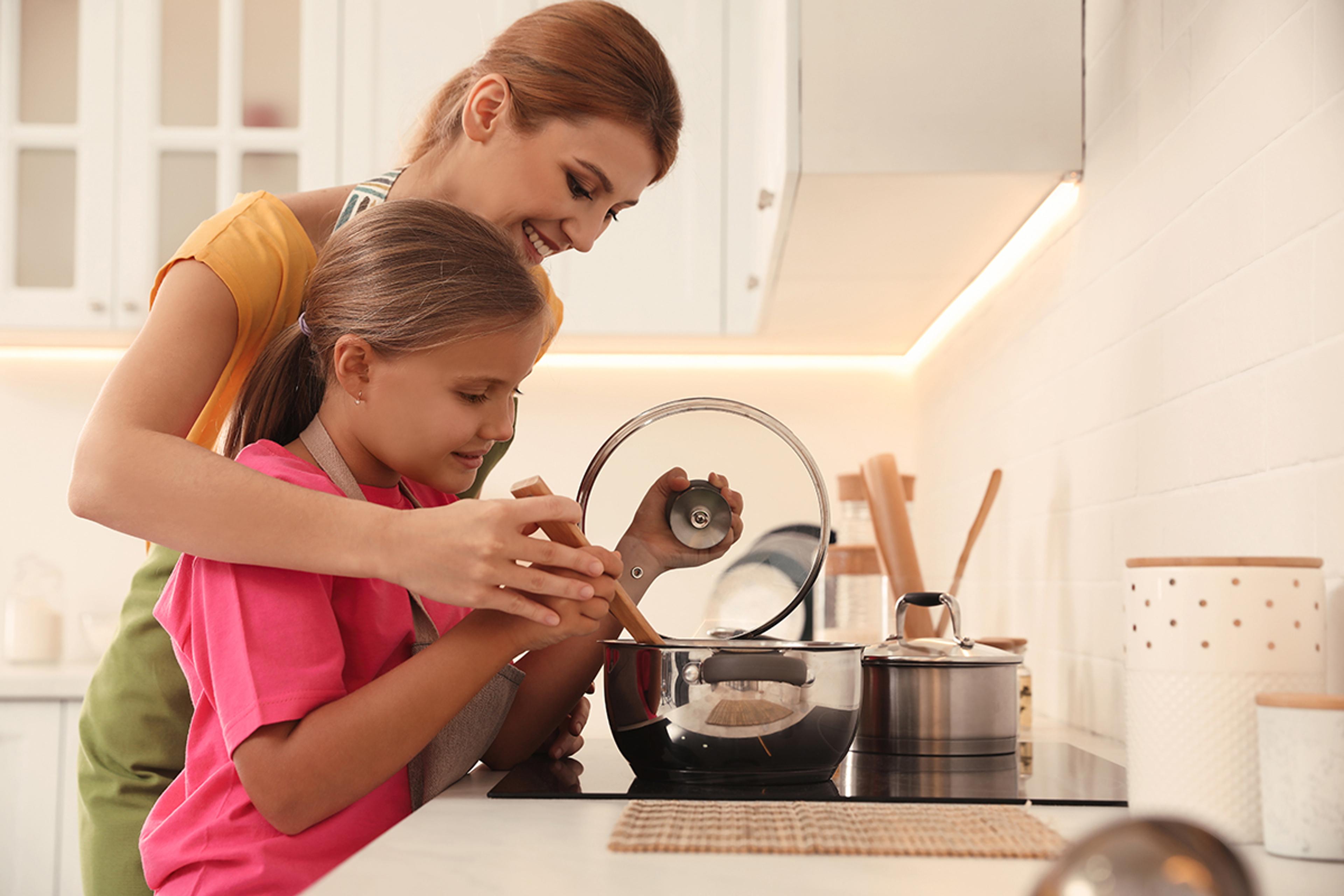
Food
Use Everything in Your Kitchen
Maybe you bought too much of something and don’t want it to go to waste. Or maybe you’ve been home for a few weeks and have accumulated random leftovers in the fridge, each not quite enough for a meal but enough that you feel bad tossing them.
We’re in the same boat right now (insert virtual solidarity fist-bump). So we’ve compiled a few of the tips and #momhacks that are getting us through our own social distancing / work from home / homeschooling / haven’t shopped for weeks / pantry-focused mealtime lives right now. We hope these will give you a bit of inspiration for using more of what’s in your kitchen—and more deliciously.

Make More ... or Make Less
There are two schools of thought here: Either make enough to last a few meals so you have plenty of leftovers, or make less than you need for one meal and add a fruit or vegetable to fill it out. Either way works great for reducing waste in your kitchen while still putting complete and nutritious meals on the table.
Sometimes, though, it’s hard to predict what our little ones are going to eat that day. Some days they’re “staaarrrrving” and other days they just bulldoze food around their plate. While there’s no saving those soggy breakfast O’s or cheesy crackers, here are some ideas so that other foods on your child’s plate don’t go to waste:
- Don’t dump the milk! As long as it hasn’t been out of the fridge for longer than an hour, save it in a jar labeled with the child’s name, then pour that milk for them at their next meal or snack. Easy peasy.
- Raw vegetables are hearty, so even if your toddler has handled them throughout the meal or even tossed on a relatively clean floor, scrub them well and refrigerate to try again later. (They did originally come out of the ground, after all.)
- Cooked veg like peas and broccoli can be tossed into mac n’ cheese or eggs.
Shred and Freeze that Block of Cheese
Did you buy a big block of cheese and aren’t going through it as quickly as you thought you would? Store the cheese block in a zip-top bag and suck the air out of it after every use—that will help keep it from going hard around the edges. Another great product is reusable beeswax food wraps. They’re sustainable, reusable, and work great for storing a variety of leftovers.
You can also shred the cheese and freeze it. Scatter it over a pan lined with parchment paper so it doesn't clump, freeze until solid, put into freezer bags, and press out the air. The texture of cheese changes a little when frozen, so it’s best to use it for cooking. While the cheese is still frozen, break it apart (bashing the bag a few times on the counter does the trick and is also wonderfully satisfying), then use the frozen cheese atop pizza, eggs, and chili, or use it in panini sandwiches, grilled cheese, cheesy scones and muffins.
Related: Did you know you can freeze milk and other dairy products?
3 Things To Do with Canned Beans and Tomatoes
Got a can of white beans or garbanzo beans and a can of tomatoes? Simmer those puppies together with spices and other veggies you might have in the fridge or freezer (onion and bell pepper would be great). Now you have choices:
- Simmer with paprika, cumin, red pepper flakes and garlic, then crack in a few eggs to poach for a faux Middle Eastern shakshuka (serve over rice to bulk it up).
- Season with Italian spices, toss in a little leftover or canned chicken if you have it, and serve over comforting buttered pasta.
- Or again with Italian spices, simmer until thick, then top toasted bread for a simple bruschetta.
No one would guess your cupboards are nearly bare with any of these on the table!

Upcycle Those Leftovers
Do you have ingredients or leftovers that aren’t quite enough for individual servings lying around? Maybe a partial can of something, a few handfuls of rice or beans, a few vegetable halves ...
Throw any meats, vegetables, and grains that are odd portion sizes or about to go “‘round the bend,” plus whatever spices sound good, into a pot and see how it comes out! Kids LOVE making “Stone Soup,” especially if you read them the children’s book of the same name while making it (here’s one and another version—both free!). Serve with good ol’ bread n’ butter.
Kids don’t like crusts on their daily lunch sandwich? Refrigerate the crusts until you have a couple cups’ worth and make an egg bake on the weekend! This turkey sausage egg bake recipe is good inspiration—simply spread the crusts on the bottom and build your bake with whatever you have on hand (in fact, adding bread to an egg bake bulks it up, so you can use fewer eggs!)
No pasta sauce? No problem! Simmer garlic and red pepper flakes in a quarter-cup of olive oil. Add this to a pot of cooked pasta, frozen or leftover veggies, protein of choice (cooked chicken, Italian sausage, or shrimp are all great) and some Parmesan cheese or even string cheese pieces if you have some. Add in a little of the pasta cooking liquid and stir vigorously for a minute to help the starches and oil come together into a sauce. (Pro tip: Add frozen or fresh veggies to the pasta cooking water in the last 2 to 3 minutes of cooking, then drain all together. Voilà! It’s premixed, and you saved washing an extra pan.)

Southwest-style, No Recipe Needed
Salsa is a common pantry item and is a great hack for cooking rice and quinoa for numerous Southwest-inspired dishes!
For 1 cup rinsed rice or quinoa, use 1 1/2 cups cooking liquid and 1 cup chunky red or green salsa (or canned diced tomatoes and add your own spices) and cook until done. Fold in a can of rinsed black or pinto beans, drained corn, some cooked chicken or ground beef, and top with your favorite hot sauce.
It’s delicious eaten just like this as a bowl, or it makes excellent burrito filling and taco salads. If you don’t have meat, you could top this with a soft-cooked egg!
For a comforting casserole, mix in a little more spice, spread it in a greased baking dish, top with cheese (a great use for that frozen shredded cheese!), and bake until bubbly on top and crisp on the bottom.
And here’s one more super-simple fav in my house that you can legitimately have on the table in 30 to 40 minutes, and most of that is oven time. Sear 4 or 5 chicken thighs in an oven-safe skillet and remove to a plate. Add quinoa, salsa and a little water to the pan and bring to a boil. Nestle in the thighs skin side up, and bake at 400 degrees for 20 to 30 minutes, stirring the quinoa once. If you have leftovers (a big “if”), shred up the meat and mix into the quinoa to easily reheat later.

Scrap-tastic Homemade Chicken Stock
If you’re home all day, why not have a pot of homemade stock simmering on the stove and filling the house with heavenly and comforting aromas? Many vegetables that store well are also a great base for homemade stock, and it’s more hands-off than most people think!
Step 1: Freeze your vegetable and meat scraps.
Every time you have trimmings from onions, carrots, celery, mushrooms, and (if desired) chicken or turkey trimmings and bones, pop them all into a freezer bag, push out the air, and keep it in your freezer. Add to it whenever you have more scraps. You can even toss in unused fresh herbs like parsley, thyme and rosemary. They all add great flavor.
Step 2: Dump and simmer.
That’s seriously all it takes. When you get a full bag, dump it in a big pot, add enough water to cover, and add a few whole peppercorns, thyme, rosemary, and bay leaves if you have them (just no salt right now). Bring it to a boil, reduce to a simmer, and skim off any foam that rises to the surface. Simmer partially covered for a few hours while you attend that Zoom meeting or give the kids a math lesson. Taste and if you like the flavor, strain it through a fine-mesh sieve. Discard all the used veggies and meat—they’ve given you all the love they have to give. Now you have a simple stock that’s great for cooking grains or as a base for soup.
Step 3: Store and use.
You can use it immediately, or refrigerate overnight and skim off any fat that rises to the surface (if you used meat). At this point, you can either keep the final broth in the fridge and use it in recipes over the next week, or ladle into freezer-safe containers, leaving one inch at the top. Freeze uncovered until solid, then put on the lid.
If you’re interested in longer-term preservation like canning, we recommend always using a reputable home preservation resource like FreshPreserving.com and the National Center for Home Food Preservation.
We hope this gives you a bit of inspiration for those limited pantries during this strange time. Find and spread joy wherever you can, friends, and if it’s through food, why, all the better! Be kind and be healthy. Much love from your friends and farmers at Organic Valley.
Related Articles
- Tags:
- recipes,
- cooking & entertaining
















